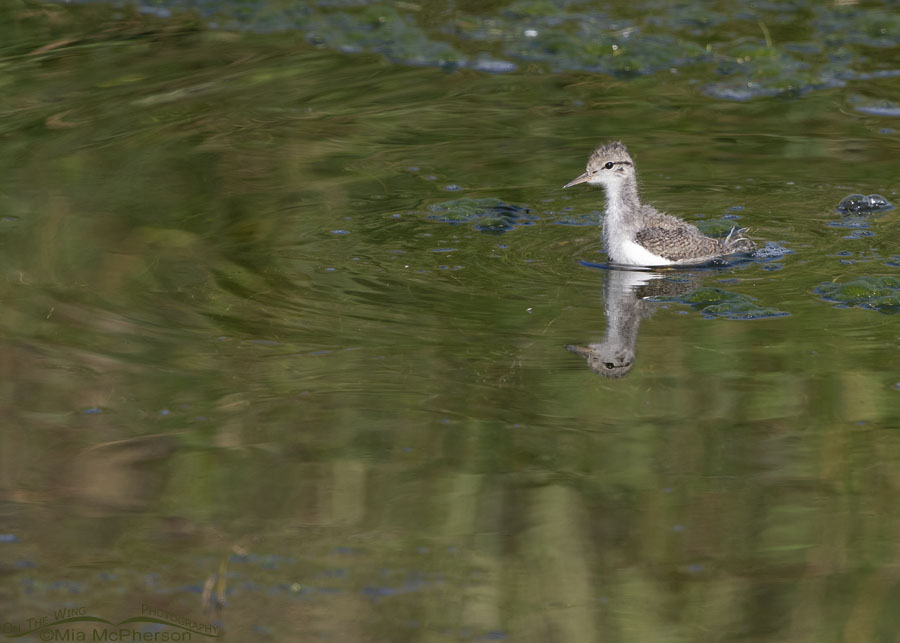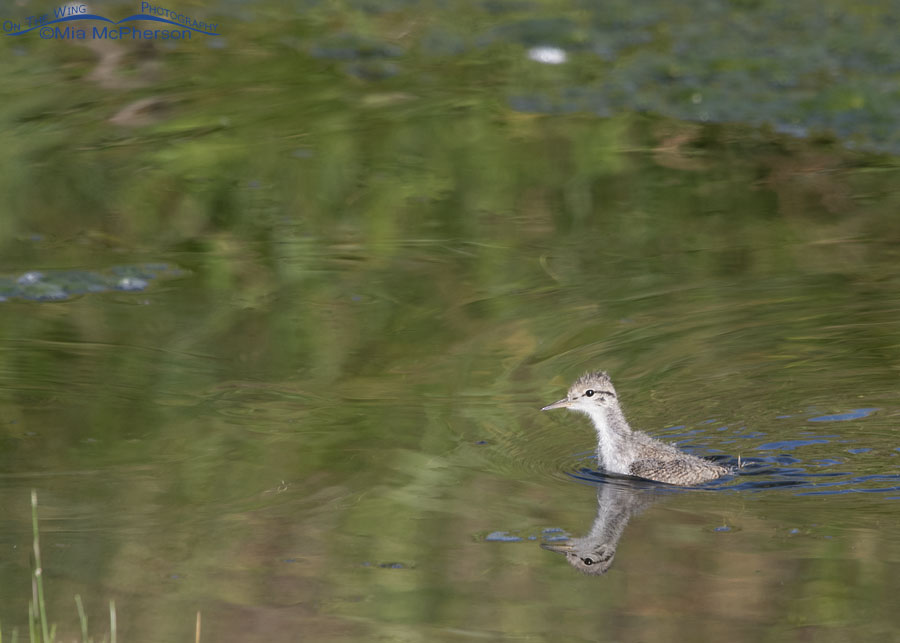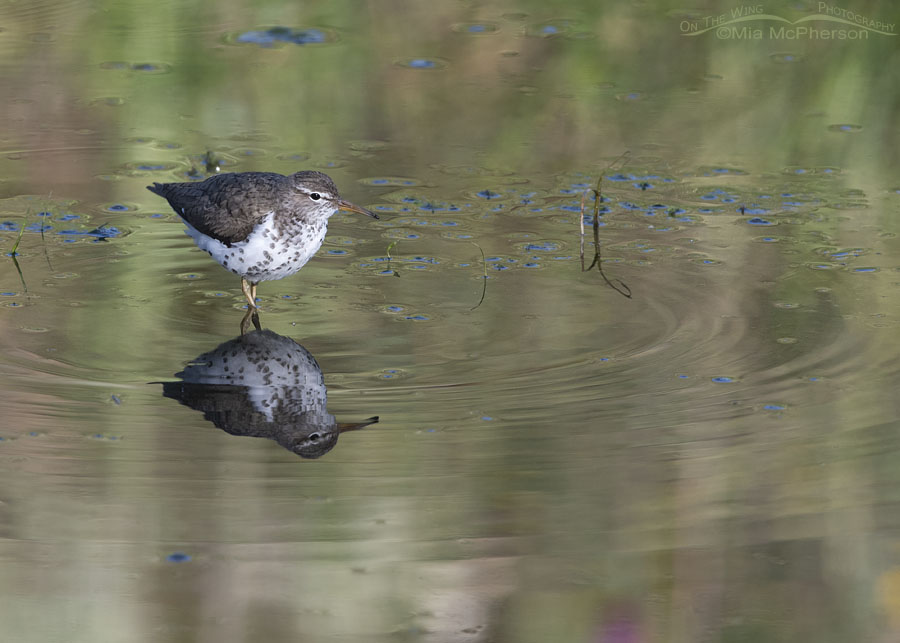 Spotted Sandpiper chick swimming in an alpine creek – Nikon D500, f7.1, 1/640, ISO 500, -0.3 EV, Nikkor 500mm VR with 1.4x TC, natural light
Spotted Sandpiper chick swimming in an alpine creek – Nikon D500, f7.1, 1/640, ISO 500, -0.3 EV, Nikkor 500mm VR with 1.4x TC, natural light
Two days ago I wrote about Spotted Sandpiper chicks and shared a few photos of them that I had taken on the 28th of July high in the Wasatch Mountains. In that post I mentioned that I had truly hoped to take photos of the young sandpiper chicks swimming across the creek but that when they did cross the creek they had their backs to me.
My disappointment didn’t last long because the next day I was able to photograph one of the Spotted Sandpiper chicks swimming across the alpine creek who was facing towards me.
Note: Both chicks swam across the creek a couple of times but I missed out on photographing all but this one instance because I was focused on photographing other birds at the time.
 Spotted Sandpiper chick swimming across an alpine creek – Nikon D500, f7.1, 1/500, ISO 500, -0.3 EV, Nikkor 500mm VR with 1.4x TC, natural light
Spotted Sandpiper chick swimming across an alpine creek – Nikon D500, f7.1, 1/500, ISO 500, -0.3 EV, Nikkor 500mm VR with 1.4x TC, natural light
The young sandpiper waded into the water then used its little feet to paddle across the water until it could feel solid ground under its feet again. In this photo the chick was in a bit deeper water than it was in the first photo but it wasn’t long after this image was taken before it reached the other shore.
Once these young Spotted Sandpipers learn to fly they will cross the creek using their wings. Why swim when you can fly?
I was over the moon to be able to take these photos of the young Spotted Sandpiper swimming across the alpine creek because I’ve never had the opportunity to do so before.
 Male Spotted Sandpiper watching his young – Nikon D500, f7.1, 1/400, ISO 500, Nikkor 500mm VR with 1.4x TC, natural light
Male Spotted Sandpiper watching his young – Nikon D500, f7.1, 1/400, ISO 500, Nikkor 500mm VR with 1.4x TC, natural light
As usual the male Spotted Sandpiper was nearby watching over his chicks.
Or are they his?
Female Spotted Sandpipers mate with as many as four males and they can store sperm for up to a month internally so these chicks might not even be this male’s progeny.
So the eggs that a male Spotted Sandpiper incubates and the chicks he rears may well not be genetically his. It doesn’t appear to matter one iota to the males of this species because they watch over the chicks carefully as they grow towards independence.
Life is good. Stay safe.
Mia
Click here to see more of my Spotted Sandpiper photos plus facts and information about this species.


Really cool pics. I love the Sandpipers reflection in #3. Thanks Mia.
Wonderful shots!
They are so sweet and very well colored wil the sand and rocks! Great photo’s honey1
I really, really like the male spotted sandpiper’s ethos.
And can only say awwww at the chick.
I can swim and would love to fly.
Adorable!
They don’t seem to be natural swimmers, but making out. What you said about storing sperm and being polygamous was interesting. Glad the males are sticking around and being caregivers. iwonder if they know something we don’t?
I never knew that Spotted Sandpipers could swim. At least the little ones. Thanks for the info!